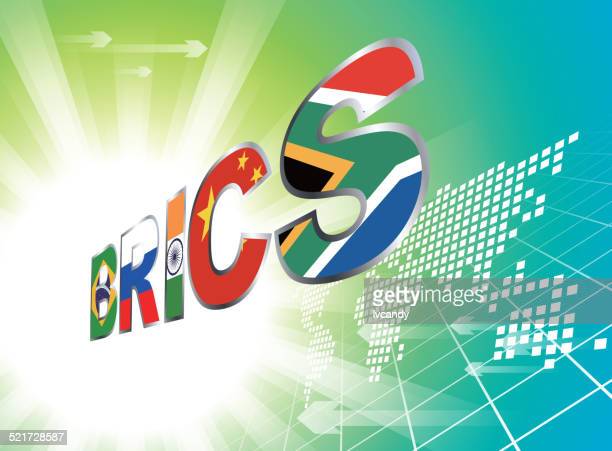At the heart of this enhanced multilateral system lay the pivotal role of the United Nations in driving the reform of the global financial system and its institutions.
In 2009, during its first summit in Yekaterinburg, Russia, the BRICS (Brazil, Russia, India, China, and South Africa) elucidated a comprehensive agenda for reform and development that would continue to seek a more equitable, fair, and inclusive global governance system. At the heart of this enhanced multilateral system lay the pivotal role of the United Nations in driving the reform of the global financial system and its institutions. The aim was to mobilize the global community towards development, with a specific focus on emerging markets and developing economies.
The progress made in this regard has been significant, a fact further substantiated by ongoing global approval. This is evidenced by events such as the upcoming enlargement of the BRICS, where over 30 countries globally have sought membership. The bloc’s success is highlighted by the creation and effective operation of the New Development Bank. It has also taken the lead in discussions related to currency and payment systems, new trade, and other significant and impactful global issues.
As BRICS enters a new five-year cycle in 2024, the advancement of initiatives capable of deepening intra-bloc cooperation and addressing common challenges becomes imperative. These include the reform of the global financial architecture and the integration of BRICS economies, alongside expansion of membership. To further progress, issues such as a payment mechanism and investments within the bloc must be resolved to translate commitments into action, avoiding the pitfalls of the past.
Since the 2008 global financial and economic crisis, the world has witnessed significant changes. Emerging markets and developing economies have faced challenges due to decisions made by the great powers in a system they had little influence over. The establishment of G20 and BRICS was a response to the recognition of the necessity for international reforms. These reforms aimed to ensure fairness, equity, inclusivity, and address the specific needs of the Global South.
The Covid-19 outbreak has further stymied economic recovery, especially affecting the development plans of regions like Africa and Latin America. The rise of BRICS represents a beacon of hope for these historically underprivileged parts of the world and must continue to address the development needs of the Global South. This includes fostering discussions and initiatives for a fair energy transition, local currency trading, a potential BRICS currency, and targeted development financing.
Concerted efforts must be undertaken to delineate a path towards an equitable and developmental trade partnership for BRICS, specifically in key sectors such as mining, industrialization, infrastructure expansion, health, and energy transition. India has been a consistent proponent of these themes during its tenure in G20 leadership. Looking forward, Brazil is slated to assume the G20 presidency in 2024, to be succeeded by South Africa in 2025. This succession offers a unique opportunity for BRICS countries to leverage their collective influence within the G20 platform.
In doing so, the BRICS can firmly advocate for developmental imperatives, thereby expediting cooperation and financing arrangements that align with their shared goals and the broader developmental needs of the Global South. The strategic alignment between BRICS and the G20 could serve as a catalyst for positive transformation within the global economic landscape, promoting inclusive growth and sustainable development.
A concerted effort should also be made to launch the BRICS payment system and the Contingent Reserve Arrangement. This can be done by refining existing proposals for the establishment of bilateral swap agreements between the five original BRICS countries, ultimately converging into an integrated system. This system, as well as the Contingent Reserve Arrangement, could be open to new BRICS entrants.
Similarly, the BRICS could work to position the New Development Bank as a hub for ideas, partnerships, and solutions to address the development challenges faced by the Global South, originating from within the region itself. This platform could encompass practical aspects like knowledge exchange for informed project design and implementation to advance the achievement of the Sustainable Development Goals, creating investment frameworks, and addressing cross-border challenges such as climate change and energy transition.
Additional measures include advancing the targeted expansion of the Bank membership, allowing the New Development Bank to finance cross-border projects and support regional integration. The commitment of the New Development Bank to gender parity at all organizational levels must also be affirmed. Similarly, incentives must be created to attract and retain women in the bank. These measures would help solidify the New Development Bank status as a multilateral entity and showcase its distinct contributions within the global financial architecture.
The New Development Bank and the BRICS have the opportunity and responsibility to reshape the global financial landscape. By addressing the challenges and seizing the opportunities outlined, BRICS can forge a path that not only strengthens their individual economies but also contributes to a fairer and more inclusive global system. The path may be complex, but the potential rewards for the global community are immense. The vision laid out in Yekaterinburg in 2009 is more relevant today than ever before.
https://www.financialexpress.com/business/defence-brics-at-the-crossroads-seizing-the-moment-for-a-fairer-global-economy-3214871/





